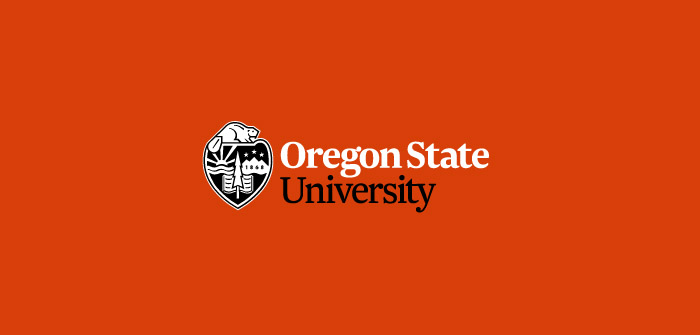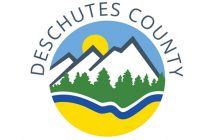The Oregon State University Board of Trustees approved a ten-year business forecast that includes initiatives to advance the university mission and provide for financial stability while OSU seeks to address shifts in national and statewide student demographics and manage increased expenses, including a substantial rise in employee retirement costs.
Driven by the university’s Strategic Plan 4.0, the forecast outlines strategies to sustain the university’s financial health: reduce expenses; expand undergraduate enrollment among out-of-state and international students; grow transfer student enrollment; increase revenue-generating graduate student enrollment; expand professional education activities for adult learners; and grow programs from Ecampus, the university’s top-ranked online education provider.
The business forecast also includes plans for OSU to improve core academic and research facilities, including a focus on renovation and renewal of university facilities that support the university’s research and education activities. The capital forecast also includes efforts to address deferred maintenance of OSU buildings; continue OSU-Cascades campus development; construct an Arts and Education Complex and a proposed Collaborative Innovation Complex; and invest in athletics facilities.
“This forecast provides the university and trustees a sense of the financial context for the future,” said OSU President Ed Ray. “It is very valuable to be as clear as you can be in predicting what might occur financially in the future, and how we might adjust to unexpected changes as they occur.”
In other action, trustees re-elected Rani Borkar as board chair and Kirk Schueler as vice chair. The board also approved a 2020 board work plan and amendments to the conduct of board meetings policy.
The board heard an update on the status of university priorities for the upcoming legislative session, including seeking support for state bonding to complement university funding for a new OSU-Cascades campus student success center and arts and education complex on the Corvallis campus; and phased renovation of Cordley Hall in Corvallis. OSU funding for these projects includes university funds, philanthropy and additionally, student fees for the OSU-Cascades student success center.
Other OSU legislative priorities include formalizing Oregon’s plan for hemp to comply with federal regulations; establishing a state hemp commission; supporting $1.9 million in funding for ocean acidification and hypoxia research; and pursuing a bill that collects data on food and housing insecurity among college students.
Trustees adopted a resolution honoring Mike Goodwin, who retired in December, after 15 years leading the OSU Foundation and guiding The Campaign for OSU, the university’s first capital campaign that concluded in December 2014 having raised $1.142 billion from 106,000 donors.
“Mike Goodwin literally brought Oregon State University into the 21st Century as it regards fundraising,” said Ray. “It’s the impact of the philanthropy to OSU — and that has served thousands of students and faculty and many Oregon communities — that Mike helped guide that’s most important.”
Trustees approved a resolution that calls upon the board to recognize at each of its meetings that the university’s Corvallis campus and other properties are located on lands previously inhabited by indigenous people who lived in the Willamette Valley and whose lands were ceded by treaties signed by the federal government and native tribes in the 1800s. As a result, many of this indigenous people were moved to reservations.
Board members agreed to formalize its own statement to be said at the beginning of each regular board meeting that is in keeping with language used by OSU at events on the university’s Corvallis campus and that says: “Oregon State University in Corvallis, Oregon, is located within the traditional homelands of the Mary’s River, or Ampinefu, Band of Kalapuya. Following the Willamette Valley Treaty of 1855, Kalapuya people were forcibly removed to reservations in Western Oregon. Today, living descendants of these people are part of the Confederated Tribes of Grand Ronde Community of Oregon and the Confederated Tribes of the Siletz Indians.”
Trustees heard a report regarding steps underway within OSU to serve students impacted by food and housing insecurity. Dan Larson, vice provost for student affairs, reported on the efforts of a university committee of faculty, staff and students that is guiding OSU’s response. He said a number of programs provide food assistance to students with need and temporarily assist students with housing insecurity. Larson said the OSU Foundation and donors are contributing to philanthropy to assist students with need.
Trustees heard a report on actions underway throughout OSU to advance the goals and actions addressed in the university’s strategic plan update unveiled in January 2019.
The board also held an executive session to discuss labor negotiations.
At the beginning of its meeting under public comment, the board heard comments from two students and five faculty members regarding collective bargaining involving OSU and its faculty union, and comments from two Corvallis community members regarding housing in the community.
Afiscal year 2019 external audit annual report was also approved during a joint meeting of the board’s Executive and Audit, and Finance and Administration committees.
Several board committees also recently met:
- The Academic Strategies Committee approved a new Bachelor of Arts degree program in creative writing; new Bachelor of Science programs in engineering science and outdoor products to be based at OSU-Cascades; and a new graduate program in history. Each of the new academic programs will be effective in fall 2020, pending support of the statewide Provosts Council and approval of the Higher Education Coordinating Commission.
The committee also heard a report on the university’s evaluation of standardized testing used in undergraduate admissions at OSU and at most universities and colleges across the nation.
Jon Boeckenstedt, vice provost for enrollment management, said the university is exploring giving future OSU undergraduate student applicants the option to not take the standard SAT and ACT aptitude tests that are administered nationally. Boeckenstedt told committee members that national research indicates that standardized aptitude tests are not the best predictors of collegiate student success. He said such tests often serve as admissions barriers for students of color and students from low-income families.
Provost Ed Feser told the committee that OSU is conducting an extensive analysis and engagement process to evaluate the concept of giving prospective applicants for first-time, first-year undergraduate admission the option of submitting standardized test scores as part of their application, rather than being required to submit such scores. He said the engagement process will gather input from OSU faculty, members of the university’s Faculty Senate, college leaders, students and other stakeholders before making a recommendation to President Ray this spring.
The committee also heard an update on the research activities throughout the university and a report on programs and activities involving OSU Extension, 4-H, Oregon Campus, Oregon Outdoor School and other outreach and engagement programs that serve youth and communities in all of Oregon’s 36 counties.
- The Finance & Administrative Committee heard an update on the university’s plan to purchase and renovate a building on Southwest Research Way in Corvallis, to serve as the gymnastics practice facility. The committee advanced the project to the design development phase. The facility will replace the Gladys Valley Gymnastics Center on the Corvallis campus. The new facility will nearly double practice space.
The committee also heard a report about budget planning and the outlook for tuition rates next school year, and heard an update about OSU Foundation activities.
- The Executive & Audit Committee discussed the enterprise risk management report about risks that may impact the university.
The board also hosted a work session to follow up on discussions from the board’s October retreat, and the board and the Office of Institutional Diversity hosted an informal discussion on Native American student success at the Native American Longhouse Eena Haws.




